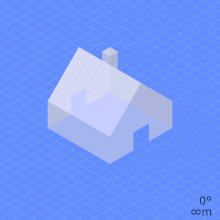
In photography and cinematography, perspective distortion is a warping or transformation of an object and its surrounding area that differs significantly from what the object would look like with a normal focal length, due to the relative scale of nearby and distant features. Perspective distortion is determined by the relative distances at which the image is captured and viewed, and is due to the angle of view of the image (as captured) being either wider or narrower than the angle of view at which the image is viewed, hence the apparent relative distances differing from what is expected. Related to this concept is axial magnification – the perceived depth of objects at a given magnification.
Perspective distortion takes two forms: extension distortion and compression distortion, also called wide-angle distortion and long-lens or telephoto distortion,[1] when talking about images with the same field size. Extension or wide-angle distortion can be seen in images shot from close using a wide-angle lens (with an angle of view wider than a normal lens). Objects close to the lens appear abnormally large relative to more distant objects, and distant objects appear abnormally small and hence farther away – distances are extended. Compression, long-lens, or telephoto distortion can be seen in images shot from a distance using a long focus lens or the more common telephoto sub-type (with an angle of view narrower than a normal lens). Distant objects look approximately the same size – closer objects are abnormally small, and more distant objects are abnormally large, and hence the viewer cannot discern relative distances between distant objects – distances are compressed.
Note that linear perspective changes are caused by distance, not by the lens per se – two shots of the same scene from the same distance will exhibit identical perspective geometry, regardless of lens used. However, since wide-angle lenses have a wider field of view, they are generally used from closer, while telephoto lenses have a narrower field of view and are generally used from farther away. For example, if standing at a distance so that a normal lens captures someone's face, a shot with a wide-angle lens or telephoto lens from the same distance will have exactly the same linear perspective geometry on the face, though the wide-angle lens may fit the entire body into the shot, while the telephoto lens captures only the nose. However, crops of these three images with the same coverage will yield the same perspective distortion – the nose will look the same in all three. Conversely, if all three lenses are used from distances such that the face fills the field, the wide-angle will be used from closer, making the nose larger compared to the rest of the photo, and the telephoto will be used from farther, making the nose smaller compared to the rest of the photo.
Outside photography, extension distortion is familiar to many through side-view mirrors (see "objects in mirror are closer than they appear") and peepholes, though these often use a fisheye lens, exhibiting different distortion. Compression distortion is most familiar in looking through binoculars or telescopes, as in telescopic sights, while a similar effect is seen in fixed-slit strip photography, notably a photo finish, where all capture is parallel to the capture, completely eliminating perspective (a side view).